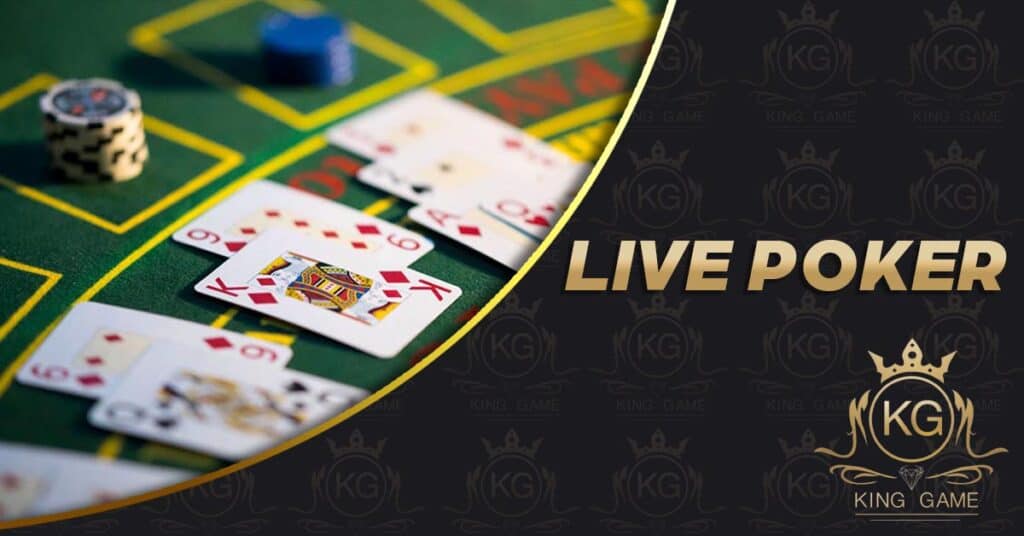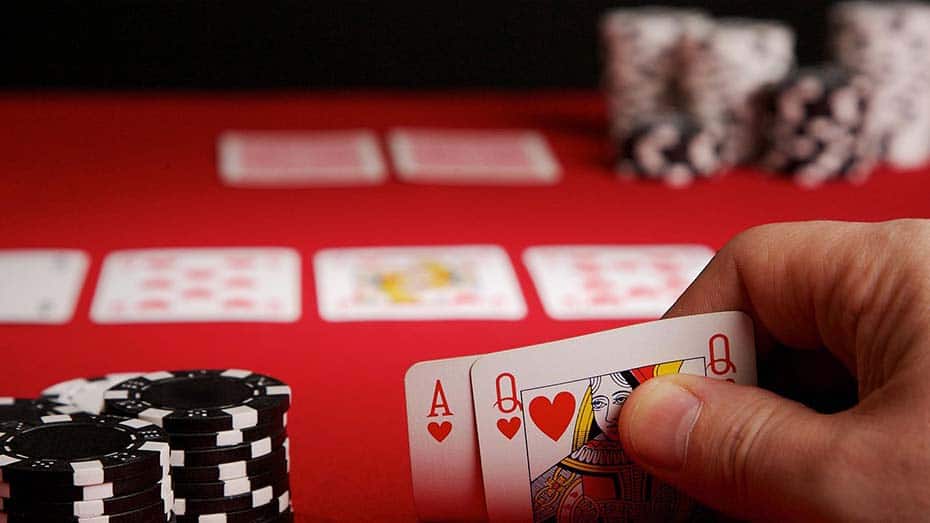Unveiling the World of Live Poker: Play to Win

Live poker is a type of poker played in person, typically at physical casinos or poker rooms, as opposed to online poker, where players compete remotely via the internet. In live poker, participants gather around a table, using physical cards and chips, and engage in face-to-face interactions. This format offers a more social and immersive experience compared to online poker.
Live poker encompasses various game formats, including popular options like Texas Hold’em, Omaha, and Seven Card Stud. Success in live poker depends on a combination of strategic thinking, skill, and the ability to read opponents. Professional dealers typically oversee the game, handling tasks such as card distribution, managing bets, and ensuring smooth gameplay.
One distinguishing feature of live poker is its rich history and traditions. It is also renowned for the excitement that comes from observing opponents’ facial expressions and body language, often referred to as “poker tells.” This element of psychological insight adds an extra layer of intrigue to the game. Live poker remains a beloved and thrilling pastime for poker enthusiasts worldwide.
How to Play Live Poker: A Comprehensive Guide for Beginners

Playing live poker involves a series of essential steps and considerations. Here is a comprehensive guide on how to participate in live poker:
- Master the Game Rules: Gain a solid understanding of the rules of the specific poker variant you intend to play. For live poker, Texas Hold ’em is a popular choice.
- Select a Reputable Venue: Seek out a reputable casino or poker room that offers live poker games, such as Jiliko. Check their schedule to find games that align with your preferences.
- Acquire Chips and Secure a Seat: Upon arriving at the poker room, visit the cashier to exchange your money for chips. Determine your budget, then find an available seat at a table with suitable betting limits.
- Comprehend Blinds and Antes: Before card dealing begins, be aware of the obligatory bets known as blinds. These comprise the small blind and the large blind, and some games may also include antes. Familiarize yourself with these amounts for the specific game you’re participating in.
- Observe the Gameplay: Take a moment to observe how the game unfolds. Pay close attention to the playing styles of others, as this information can be valuable when it’s your turn.
- Wait Patiently: Once you’re seated, patiently await the dealer’s distribution of cards. Maintain your focus on the game and avoid distractions.
- Make Informed Choices: When it’s your turn, consider your available options in accordance with the game rules. You can choose to fold, check, bet, call, or raise based on the strength of your hand and the current situation.
- Manage Your Chips Wisely: Keep track of your chip stack and make prudent decisions based on your available resources. Avoid going all-in or committing excessive chips in a single move.
- Exhibit Good Etiquette: Adhere to the rules and exhibit courteous behavior. Avoid taking actions out of turn, refrain from revealing your cards prematurely, and keep conversation at an appropriate level.
- Set Limits and Recognize When to Quit: Establish clear limits on the amount you’re willing to lose and adhere to them steadfastly. Poker can be unpredictable, so resist the urge to chase losses or play with funds beyond your means. Remember that knowing when to quit is as essential as knowing when to play.
Varieties of Live Poker: Exploring Different Poker Games in Physical Casinos and Poker Rooms

Live poker provides an array of poker variations for players to enjoy in casinos, poker rooms, or private gatherings. Below are some well-known live poker variants:
Texas Hold’em
Among the most popular live poker forms, Texas Hold’em entails dealing two hole cards and utilizing them with five community cards to craft the optimal hand. Texas Hold’em encompasses No-Limit, Pot-Limit, and Fixed-Limit variations.
Omaha
Similar to Texas Hold’em but distinctive in that players are dealt four hole cards and must incorporate precisely two of them in conjunction with three community cards to fashion their hand. Omaha incorporates diverse betting structures.
Seven Card Stud
This classic variant furnishes players with seven cards, consisting of three concealed and four visible cards. The objective is to formulate the strongest five-card hand from this seven-card combination.
Razz
A lowball poker variant where the objective is to secure the lowest possible hand. Players receive seven cards, and the participant with the lowest hand, disregarding straights and flushes, emerges as the victor.
Five Card Draw
An age-old poker variant where players are dealt five cards facing downward. They have the opportunity to exchange some or all of their cards to enhance their hand. The best five-card hand at the culmination of the final betting round prevails.
Pineapple and Crazy Pineapple
Variations akin to Texas Hold’em but with an added twist. Pineapple furnishes players with three hole cards, and Crazy Pineapple mandates discarding one card post-flop, introducing a layer of complexity and strategy.
H.O.R.S.E.
A mixed-game format that cycles through various poker variants, encompassing Hold’em, Omaha, Razz, Seven Card Stud, and Eight or Better (Stud Hi-Lo). Excelling in H.O.R.S.E. necessitates proficiency in multiple poker styles.
Mixed Games
Certain live poker tables offer mixed game formats, where diverse poker variants are played in succession. These can encompass games such as 2-7 Triple Draw, Badugi, and more.
Dealer’s Choice
In informal settings or private games, participants often take turns as the dealer and have the prerogative to select the poker variant for that specific hand. This introduces an element of variety and amusement to the gameplay.
Betting Structures in Live Poker: Understanding the Rules and Limits for Effective Gameplay

In live poker, the betting structure sets the rules and boundaries for how players can place bets and raise during a hand. Various poker games employ different betting structures, and having a firm grasp of these structures is essential for effective gameplay. Below are some standard betting structures encountered in live poker:
No-Limit (NL)
In a no-limit game, players face no upper limit on their bets. They can wager any number of chips they possess at any point during their turn. This format is renowned for its high-stakes intensity and the potential for dramatic shifts in chip stacks.
Pot-Limit (PL)
Pot-limit poker imposes a maximum bet or raise, which is capped at the current size of the pot. Players can bet or raise an amount up to the total chips already in the pot, encompassing their own prior bets and raises. This structure provides considerable betting flexibility while averting excessively large bets.
Fixed-Limit (FL)
Fixed-limit poker designates predetermined, specific bet and raise sizes for each betting round. For instance, in a $2/$4 limit game, bets and raises are confined to $2 in the early betting rounds and $4 in the later stages. This format typically results in smaller bets and a more controlled tempo of play.
Spread-Limit
Spread-limit poker grants players the liberty to bet and raise within a defined range. In a $5-$10 spread-limit game, participants can wager or raise any amount between $5 and $10. This structure strikes a balance between the unrestricted nature of no-limit and the confined nature of fixed-limit games.
Mixed Betting Structures
Some live poker games employ mixed betting structures, where various rounds feature distinct limits. For instance, a game might commence with fixed-limit betting and subsequently transition to pot-limit in later rounds.
Antes and Blinds
In numerous poker games, particularly those accommodating multiple players, antes or blinds are employed to instigate action and accumulate the pot. Antes are commonly used in stud and draw games, whereas blinds are prevalent in Texas Hold’em and Omaha.
Kill Pots
In select limit games, a “kill” can be initiated when a player secures two consecutive hands. When a kill is triggered, the betting limits escalate for that specific hand, resulting in larger pots and heightened betting activity.
Poker Hand Rankings in Live Poker: Knowing the Hierarchy of Winning Hands

In live poker, much like in most poker variants, hand rankings play a pivotal role in assessing the strength of a player’s hand and resolving conflicts when multiple players contend with their hands. Here’s a rundown of the standard poker hand rankings, ordered from the most potent to the least:
Royal Flush
Comprising the Ace, King, Queen, Jack, and Ten, all from the same suit. This is the zenith of poker hands and is invincible.
Straight Flush
A sequence of five cards in consecutive order, all belonging to the same suit. In cases of a tie, the straight flush with the highest top card prevails.
Four of a Kind (Quads)
Four cards of identical rank, accompanied by a fifth unrelated card. In instances of multiple players holding four of a kind, the set with the higher quartet emerges victorious.
Full House
Comprising three cards of one rank and two cards of another rank. In scenarios where multiple players have full houses, the one with the superior three of a kind claims the pot.
Flush
Five cards belonging to the same suit, not necessarily in sequential order. When comparing two flushes, the one with the highest single card takes the win. If these are equal, the second-highest card is scrutinized, and so forth.
Straight
A series of five cards in consecutive order, originating from diverse suits. If a tie materializes, the player holding the straight with the highest top card prevails.
Three of a Kind (Trips or Set)
Three cards sharing the same rank, along with two unrelated cards. In instances where two players possess three of a kind, the one with the higher trio secures victory.
Two Pair
Comprising two cards of one rank, two cards of another rank, and a fifth card that doesn’t contribute to either pair. When comparing two pairs, the player with the superior top pair takes precedence. If these are equal, the second pair enters the equation. If necessary, the fifth card is consulted.
One Pair
Consists of two cards of matching rank and three unconnected cards. In the event of a tie, the player with the higher pair emerges triumphant.
High Card
When none of the aforementioned hand types materializes, the strength of the hand is determined by the highest card within it. In case of parity, the second-highest card is examined, and so on.
Mastering Live Poker: Strategies for Success at the Casino Table

Succeeding in live poker involves not only grasping the rules and hand rankings but also implementing effective strategies to outmaneuver your opponents. Here are essential strategies to excel in live poker:
FAQs
Conclusion
In summary, Live Poker in KingGame Live Casino provide players with diverse and engaging experiences in the realm of poker. Whether you lean toward the authentic ambiance of live casino poker or the convenience of online platforms, each option has its distinct advantages. KingGame offers a dynamic platform with various poker variants and an immersive casino atmosphere, enriched by live dealers and interactive gameplay, catering to those who crave a sociable and captivating poker experience. Conversely, live casinos deliver the flexibility of playing from home or on the go, featuring an extensive array of poker games often accompanied by enticing bonuses and promotions. Regardless of your choice between Live Poker in KingGame or live casinos, both avenues offer opportunities to display your poker prowess, relish the excitement of the game, and potentially secure real winnings, ensuring a vibrant poker landscape accessible to players of diverse backgrounds and skill levels.









